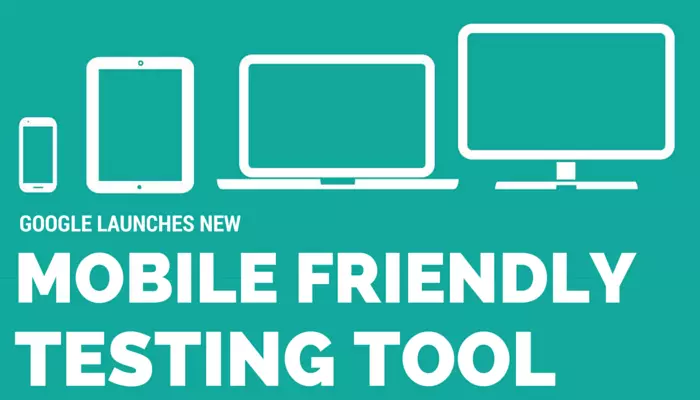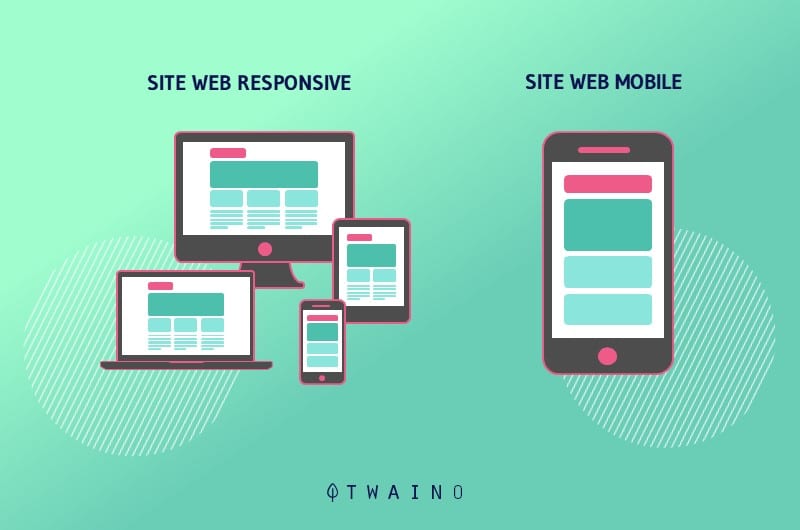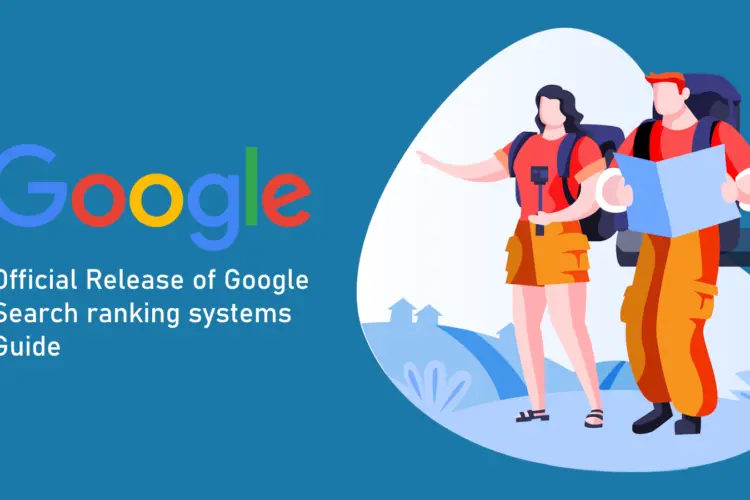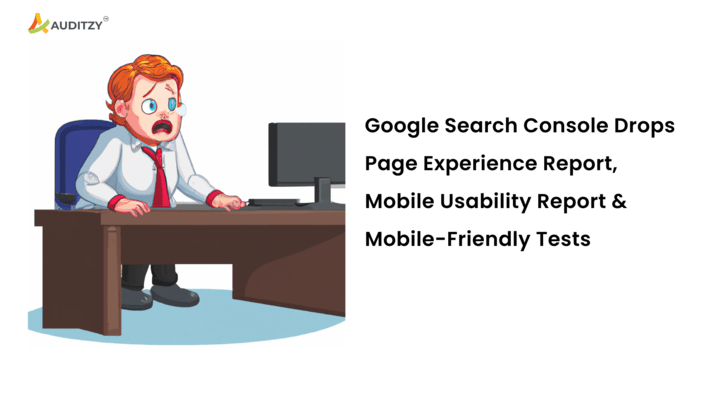“SEO Revolution Unveiled: 🚀 Navigating Google’s Mobile Tools Sunset with Tenacious Resilience, Turning Challenges into Triumphs, and Paving the Way for Limitless Opportunities! 💪🌐”,2023

Table of Contents
- Introduction
- 1.1 Background
- 1.2 Announcement and Retirement Date
- Google’s Announcement
- 2.1 Expression of Gratitude
- 2.2 Acknowledgement of Tool Importance
- 2.3 Emphasis on Mobile Usability Despite Tool Retirement
- Reasoning Behind Retirement
- 3.1 Evolution of Mobile Usability Evaluation
- 3.2 Emergence of Lighthouse as an Alternative
- Access Removal and Implications
- 4.1 Unavailability of Mobile Usability Report
- 4.2 Redirection of Mobile-Friendly Test Tool
- 4.3 API Results No Longer Accessible
- Impact on Website Owners and SEO Professionals
- 5.1 Challenge Posed by Tool Discontinuation
- 5.2 Necessity for Alternative Methods
- Alternative Tools and Solutions
- 6.1 Lighthouse as a Comprehensive Tool
- 6.2 Third-Party Mobile-Friendly Testing Tools
- 6.3 Importance of Responsive Design
- 6.4 Insights from User Testing
- Google’s Shift in Approach
- 7.1 Page Experience Signals
- 7.2 Broad Assessment of User Experience
- 7.3 Focus on Loading Speed, Interactivity, and Visual Stability
- Marketers and Website Owners’ Considerations
- 8.1 Shift in Google’s Mobile-Friendliness Evaluation
- 8.2 Importance of Page Experience Signals
- 8.3 Adaptation to Changes in Reporting Tools
- Conclusion
- 9.1 Summary of Google’s Tool Retirement
- 9.2 Recommendations for Website Owners and SEO Professionals
1. Introduction:
“SEO Revolution Unveiled: 🚀 Navigating Google’s Mobile Tools Sunset with Tenacious Resilience, Turning Challenges into Triumphs, and Paving the Way for Limitless Opportunities! 💪🌐”,2023

1.1 Background
In a move anticipated since April 2023, Google officially retired the Google Search Console Mobile Usability report, the Mobile-Friendly Test tool, and the Mobile-Friendly Test API on December 1st. This decision has significant implications for website owners and SEO professionals relying on these tools for mobile-friendliness assessment.
1.2 Announcement and Retirement Date
Google’s announcement on December 4th expressed gratitude for collaboration and emphasized the tools’ role in improving mobile usability. Despite the retirement, Google underscored the continued importance of mobile usability in Google Search.
2. Google’s Announcement:
“SEO Revolution Unveiled: 🚀 Navigating Google’s Mobile Tools Sunset with Tenacious Resilience, Turning Challenges into Triumphs, and Paving the Way for Limitless Opportunities! 💪🌐”,2023
2.1 Expression of Gratitude
On December 4th, Google expressed gratitude to website owners for contributing to making the web a better place through their use of the Mobile Usability report, Mobile-Friendly Test tool, and Mobile-Friendly Test API.
2.2 Acknowledgement of Tool Importance
The announcement acknowledged the pivotal role these tools played in assisting website owners in enhancing mobile usability and overall user experience.
2.3 Emphasis on Mobile Usability Despite Tool Retirement
Google emphasized that the retirement of these tools does not diminish the critical role of mobile usability in achieving success in Google Search.
3. Reasoning Behind Retirement:
“SEO Revolution Unveiled: 🚀 Navigating Google’s Mobile Tools Sunset with Tenacious Resilience, Turning Challenges into Triumphs, and Paving the Way for Limitless Opportunities! 💪🌐”,2023
3.1 Evolution of Mobile Usability Evaluation
Google justified the retirement by noting the emergence of numerous resources for evaluating mobile usability since the launch of the Mobile Usability report nearly ten years ago.
3.2 Emergence of Lighthouse as an Alternative
The announcement highlighted Lighthouse, a tool developed by Chrome, as a robust alternative for assessing mobile usability, signaling a shift in Google’s approach.
4. Access Removal and Implications:
“SEO Revolution Unveiled: 🚀 Navigating Google’s Mobile Tools Sunset with Tenacious Resilience, Turning Challenges into Triumphs, and Paving the Way for Limitless Opportunities! 💪🌐”,2023
4.1 Unavailability of Mobile Usability Report
The retirement renders the Search Console Mobile Usability report inaccessible within Search Console, impacting users attempting to access this valuable tool.
4.2 Redirection of Mobile-Friendly Test Tool
The Mobile-Friendly Test tool, once accessible, now redirects users to Lighthouse, indicating a transition to alternative evaluation methods.
4.3 API Results No Longer Accessible
The Mobile-Friendly Test API will no longer return any results, limiting the data available for website analysis and optimization.
5. Impact on Website Owners and SEO Professionals:
5.1 Challenge Posed by Tool Discontinuation
The discontinuation of these tools poses a challenge for those relying on them for evaluating and improving the mobile-friendliness of their websites.
5.2 Necessity for Alternative Methods
SEO professionals and website owners must now seek alternative methods to ensure that their sites and web pages remain mobile-friendly, considering the removal of familiar tools.
6. Alternative Tools and Solutions:

6.1 Lighthouse as a Comprehensive Tool
Lighthouse, developed by Chrome, emerges as a reliable tool for assessing mobile usability, offering features and recommendations to optimise sites for mobile devices.
6.2 Third-Party Mobile-Friendly Testing Tools
Various third-party mobile-friendly testing tools remain available, analysing websites based on Google’s criteria and providing detailed reports on areas requiring attention.
6.3 Importance of Responsive Design
Adopting a responsive design is crucial for ensuring websites automatically adjust to different device screen sizes, enhancing the overall user experience.
6.4 Insights from User Testing
User testing provides valuable insights into mobile usability by observing user interactions on various devices, identifying pain points and areas for improvement.
7. Google’s Shift in Approach:
7.1 Page Experience Signals
Google’s shift focuses on Page Experience signals, emphasizing a broader assessment of a website’s overall user experience on mobile devices.
7.2 Broad Assessment of User Experience
The approach considers factors such as loading speed, interactivity, and visual stability, reflecting a more comprehensive evaluation beyond mobile-friendliness alone.
7.3 Focus on Loading Speed, Interactivity, and Visual Stability
Website owners and SEO professionals should adapt their strategies to prioritize factors contributing to a positive user experience, including loading speed, interactivity, and visual stability.
8. Marketers and Website Owners’ Considerations:
8.1 Shift in Google’s Mobile-Friendliness Evaluation
The retirement signifies a shift in Google’s evaluation of mobile-friendliness, emphasizing broader signals and a move away from specific tools.
8.2 Importance of Page Experience Signals
Marketers and website owners should focus on optimizing websites for factors like loading speed, interactivity, and visual stability, aligned with Google’s new emphasis.
8.3 Adaptation to Changes in Reporting Tools
Adaptation is essential for marketers and website owners, who must now rely on alternative tools and strategies to ensure their websites align with evolving standards.
9. In addition:
9.1 Summary of Google’s Tool Retirement
Google’s retirement of the Search Console Mobile Usability report, Mobile-Friendly Test tool, and Mobile-Friendly Test API signifies a strategic shift in mobile-friendliness evaluation.
9.2 Recommendations for Website Owners and SEO Professionals
Website owners and SEO professionals should embrace alternative tools, prioritize mobile usability, and adapt to Google’s evolving standards for a successful online presence.
10. Extended Insights into Mobile Usability Strategies:

10.1 Historical Context of Mobile Usability Evolution
To appreciate the significance of Google’s recent decision, it’s essential to delve into the historical context of mobile usability. Over the past decade, the digital landscape has witnessed a transformative journey, marked by the increasing prevalence of mobile devices. Google’s initial launch of the Mobile Usability report almost ten years ago was a response to this paradigm shift, aiming to assist website owners in adapting to the mobile-centric era.
10.2 Gratitude as a Reflection of Collaborative Efforts
Google’s expression of gratitude in the announcement serves as a reflection of the collaborative efforts between the search giant and website owners. The acknowledgment of joint efforts in making the web a better place underscores the shared responsibility in enhancing the online user experience.
10.3 Sustained Importance of Mobile Usability
While Google sunsets specific tools, the underlying message emphasizes the sustained importance of mobile usability in the realm of Google Search. The acknowledgment that mobile devices are more prevalent than ever underscores the critical role mobile usability plays in user satisfaction and, consequently, search engine rankings.
11. Strategic Redirection and Tool Integration:
The strategic redirection of the Mobile-Friendly Test tool to Lighthouse is not merely a discontinuation but a strategic integration. Lighthouse, a comprehensive tool developed by Chrome, offers a broader spectrum of evaluations beyond mobile-friendliness. This redirection aligns with Google’s commitment to providing website owners with a tool that not only meets but exceeds their mobile usability needs.
11.1 Navigational Challenges in Search Console
The unavailability of the Mobile Usability report within Search Console poses navigational challenges for users accustomed to accessing critical data through this platform. This shift necessitates a period of adjustment, prompting users to familiarize themselves with alternative pathways within the Search Console interface.
11.2 API Result Changes and Implications
The cessation of Mobile-Friendly Test API results has ramifications beyond the immediate unavailability of data. This shift prompts a broader consideration of API-based strategies and necessitates the exploration of alternative data sources for those who heavily relied on API-driven insights.
12. Emerging Trends in Mobile Usability Evaluation:
As website owners and SEO professionals adapt to Google’s decision, it’s crucial to explore emerging trends in mobile usability evaluation. The emphasis on broader Page Experience signals signifies a holistic approach that extends beyond traditional metrics. This evolving landscape encourages professionals to explore innovative methodologies to gauge user experience comprehensively.
12.1 User-Centric Metrics Beyond Mobile-Friendliness
Beyond the conventional metrics of mobile-friendliness, the focus on loading speed, interactivity, and visual stability introduces a user-centric dimension. This shift necessitates a recalibration of optimization strategies, aligning them with the evolving expectations of users engaging with websites on various devices.
12.2 Aligning with User Behavior Through Adaptive Design
The importance of adaptive design becomes paramount in the context of evolving user behaviour. Responsive design is not merely a recommendation but a strategic imperative for website owners aiming to align their digital properties with the dynamic preferences of users across diverse devices.
13. The Role of Third-Party Testing Tools in the Post-Tool Era:
“SEO Revolution Unveiled: 🚀 Navigating Google’s Mobile Tools Sunset with Tenacious Resilience, Turning Challenges into Triumphs, and Paving the Way for Limitless Opportunities! 💪🌐”,2023
With the retirement of Google’s mobile usability tools, the role of third-party testing tools gains prominence. Exploring and leveraging these tools becomes imperative for professionals seeking reliable alternatives to ensure mobile-friendliness and adherence to evolving search engine standards.
13.1 Comprehensive Evaluations Through Third-Party Tools
Third-party mobile-friendly testing tools offer comprehensive evaluations based on established criteria, providing detailed reports that guide website owners in optimizing their sites effectively. These tools serve as valuable assets in the absence of Google’s now-retired tools.
13.2 Integrating Lighthouse into Workflow
The integration of Lighthouse into the workflow emerges as a central theme in the post-tool era. Professionals are encouraged to explore the diverse capabilities of Lighthouse, whether through Chrome DevTools, command line usage, or as a Node module, ensuring a seamless transition to alternative evaluation methodologies.
14. Continued Learning and Collaboration:
“SEO Revolution Unveiled: 🚀 Navigating Google’s Mobile Tools Sunset with Tenacious Resilience, Turning Challenges into Triumphs, and Paving the Way for Limitless Opportunities! 💪🌐”,2023
In navigating this transformative phase, the importance of continued learning and collaboration cannot be overstated. The digital landscape is dynamic, and staying informed about emerging tools, methodologies, and industry best practices becomes a cornerstone for sustained success.
14.1 Leveraging Resources such as Google I/O
Professionals can leverage resources like Google I/O to deepen their understanding of tools like Lighthouse. Learning more about how to use and contribute to Lighthouse ensures a proactive approach to staying at the forefront of mobile usability evaluation.
14.2 Community Engagement and Knowledge Sharing
Engaging with the broader community of SEO professionals, web developers, and digital marketers facilitates knowledge sharing. Collaborative efforts in adapting to industry shifts contribute to a collective pool of insights that can guide effective strategies in the post-Google-tools era.
15. Adapting to the Mobile-Centric Future:
In conclusion, Google’s decision to sunset its mobile usability tools signifies a pivotal moment in the evolution of digital strategies. Adapting to this mobile-centric future requires a multifaceted approach, encompassing the exploration of alternative tools, embracing emerging trends, and fostering a spirit of continuous learning and collaboration. Website owners and SEO professionals navigating this landscape with agility are poised to thrive in an era where mobile usability remains a cornerstone of online success.
16. Reflecting on Technological Advancements in Mobile Usability:
Examining the technological advancements that have shaped the landscape of mobile usability over the years adds depth to our understanding. From the early days of responsive design to the present, where user expectations have become more sophisticated, the tools provided by Google have played a crucial role in facilitating this evolution. Google’s decision to sunset specific tools represents not just a transition but a recognition of the ever-changing dynamics within the digital ecosystem.
16.1 The Evolution of Responsive Design
Delving into the evolution of responsive design unveils a journey marked by iterative improvements. The initial concept of fluid grids and flexible images has now matured into a sophisticated approach where websites seamlessly adapt to a multitude of devices. Responsive design, once a recommendation, is now a fundamental aspect of creating a user-centric online experience.
16.2 Integrating User-Centric Metrics into Development Practices
The emphasis on user-centric metrics, as highlighted by Google, urges developers and website owners to integrate these considerations into their development practices. Prioritizing loading speed, interactivity, and visual stability becomes not just a metric to meet but a philosophy to embed within the core of web development strategies.
17. Navigational User Experience Challenges:
Exploring the navigational challenges stemming from the removal of the Mobile Usability report within Search Console sheds light on the user experience aspects of these changes. As users accustomed to a specific interface seek critical data, the importance of an intuitive and user-friendly design within these platforms becomes evident. Google’s user-centric approach extends beyond website design to its own tool interfaces.
17.1 Opportunities in Interface Optimization
The challenges presented also bring forth opportunities for interface optimization. As website owners and professionals adapt to the new Search Console layout, there arises the chance to enhance the overall usability of these platforms. This could potentially lead to an even more streamlined and intuitive user experience, benefiting both novices and seasoned users.
17.2 User Training and Resource Accessibility
Considering the navigational challenges, there is a parallel need for user training and accessible resources. Offering tutorials, guides, or interactive demos within the Search Console can empower users to swiftly acclimate to the changes. This approach aligns with Google’s commitment to education and collaboration with its user base.
18. Global Implications of Mobile Usability Standards:
Expanding our perspective to consider the global implications of mobile usability standards enriches the discussion. In a world where digital connectivity knows no bounds, the impact of Google’s decisions extends to diverse markets with varying technological infrastructures. Adapting strategies to accommodate these global nuances becomes crucial for businesses with an international footprint.
18.1 Addressing Varied Network Infrastructures
Considering the diverse network infrastructures worldwide, website owners must navigate challenges related to varied connectivity speeds. Optimising for mobile usability goes beyond design; it includes addressing the performance bottlenecks experienced in regions with limited access to high-speed internet.
18.2 Cultural Considerations in Mobile User Experience
Cultural considerations also come into play when optimizing mobile user experiences globally. Understanding user preferences, regional design aesthetics, and linguistic nuances contributes to a more inclusive and user-friendly online presence. This holistic approach aligns with the broader goals of providing a universally accessible web.
19. The Continuous Evolution of SEO Practices:
“SEO Revolution Unveiled: 🚀 Navigating Google’s Mobile Tools Sunset with Tenacious Resilience, Turning Challenges into Triumphs, and Paving the Way for Limitless Opportunities! 💪🌐”,2023
The retirement of Google’s mobile usability tools prompts a reevaluation of SEO practices. SEO, as a discipline, has always been dynamic, responding to algorithmic changes and technological advancements. This juncture necessitates an evaluation of SEO strategies, focusing on adapting to evolving search engine requirements beyond the now-retired tools.
19.1 SEO Audits in the Absence of Mobile Usability Reports
In the absence of Mobile Usability reports, SEO professionals may explore alternative methodologies for comprehensive SEO audits. Leveraging a combination of third-party tools, analytics data, and search engine guidelines can provide a holistic view of a website’s performance and potential areas for improvement.
19.2 Balancing Technical SEO with User-Centric Considerations
As SEO strategies evolve, the balance between technical SEO and user-centric considerations becomes more pronounced. Prioritizing a positive user experience aligns seamlessly with Google’s focus on Page Experience signals, reinforcing the idea that technical optimization should ultimately enhance the end-user journey.
20. Anticipating Future Developments in Mobile Usability:
Anticipating future developments in mobile usability requires a forward-thinking approach. As technology continues to advance, the possibilities of innovative tools and methodologies emerging on the horizon are substantial. Website owners and SEO professionals should remain vigilant, ready to embrace the next wave of advancements that will shape the future of mobile user experiences.
20.1 Exploring Emerging Technologies Beyond Lighthouse
While Lighthouse currently stands as a robust tool, exploring emerging technologies beyond its current capabilities presents an avenue for future development. Continuous research and development efforts within the tech community may yield tools that surpass existing standards, offering even more nuanced insights into mobile usability.
20.2 Collaboration in Shaping the Future of Mobile Usability
The collaborative spirit between tech companies, developers, and Google itself plays a pivotal role in shaping the future of mobile usability. Open dialogues, feedback loops, and active participation in beta testing programs contribute to an ecosystem where tools and strategies are refined collaboratively.
21. Conclusion: Embracing a Mobile-Centric Paradigm:
“SEO Revolution Unveiled: 🚀 Navigating Google’s Mobile Tools Sunset with Tenacious Resilience, Turning Challenges into Triumphs, and Paving the Way for Limitless Opportunities! 💪🌐”,2023

In conclusion, the retirement of Google’s mobile usability tools propels us into a new era where a mobile-centric paradigm is not just encouraged but imperative. The expansive exploration of technological evolution, global implications, SEO recalibrations, and the anticipation of future developments underscores the multifaceted nature of this transition. Embracing this paradigm shift positions website owners and SEO professionals at the forefront of a dynamic digital landscape, where adaptability and innovation are the cornerstones of sustained success.
You may also like our informative articles by clicking this link:
“Unlock Your Ultimate Self-Care Journey 🌿: Nurturing Mind, Body, and Soul with Transformative Strategies! Discover the Power of Positive Habits and Overcome Negative Challenges for a Thriving Life! 🚀,2023
“Unveiling Arizona’s Hidden Marvels: A Journey Through Sonoran Beauty and Spanish Heritage | Discover the Power of Nature and History in Organ Pipe Cactus and Tumacácori National Parks!”,2023

